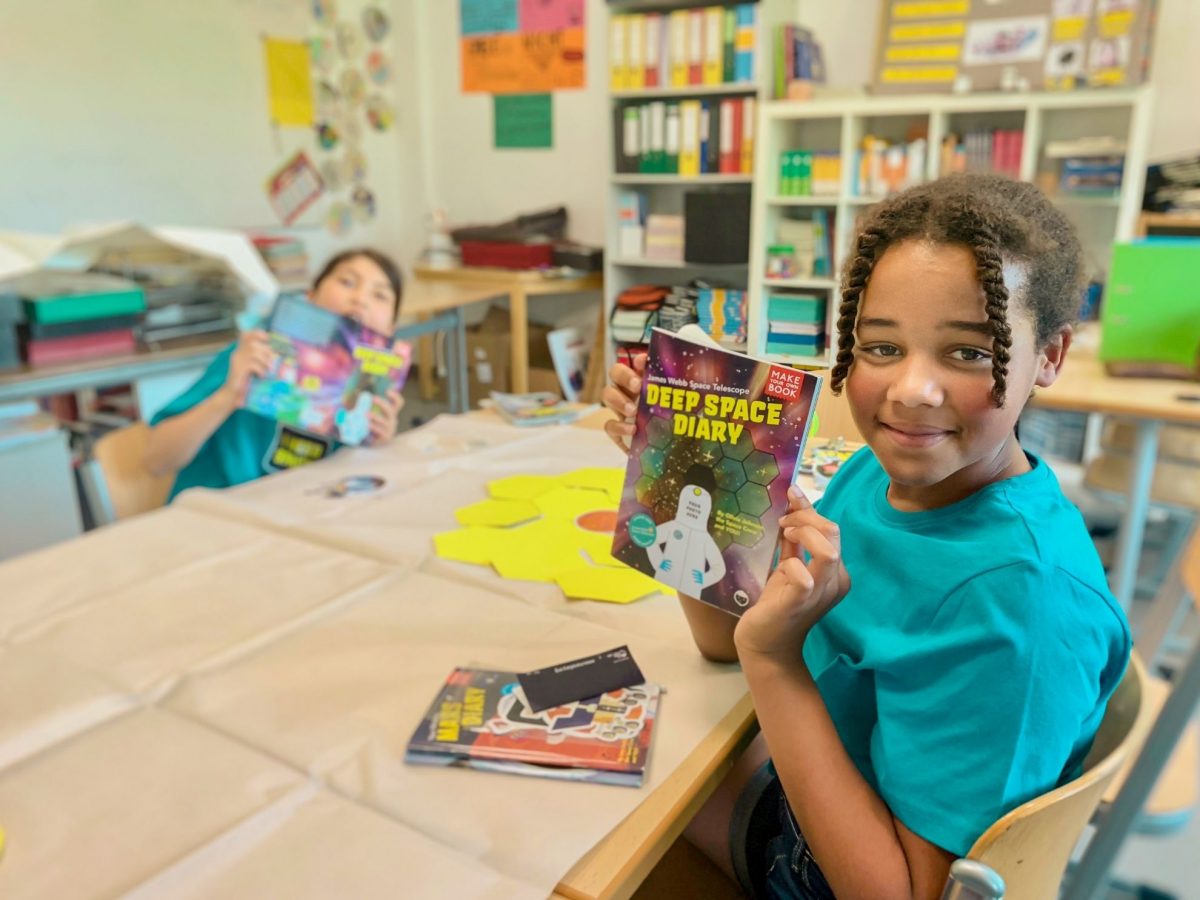2021 is a big year for space! When it launches in December, the James Webb Space Telescope will be the biggest space telescope of all time, able to explore the universe as never before. The successor to the Hubble Space Telescope, Webb has been built by, and will be used by, a global team including people all ov
For the past two years we have been working with the Science and Technology Facilities Council (STFC) and Dr Olivia Johnson to design our third space-themed primary education programme – the Deep Space Diary. This programme is themed around the science behind the James Webb Space Telescope and it opens primary students up to the wonders of our Universe, while they complete over 60 hours of arts-based science activities.
Thanks to the support of the STFC, we gifted 15,300 copies of the first Deep Space Diary to students across the UK, with a focus on areas of economic deprivation. To celebrate the launch of Webb in 2021, STFC provided further funding to distribute an additional 35,000 copies of the Diary across the UK, in English and Welsh.
The Deep Space Diary invites students to look at the world in new ways, while they design and launch their own space telescopes. How would we appear if our eyes could detect different wavelengths, like infrared? What could we see around us that might otherwise be hidden? What role do artists play in challenging the assumptions we all make? Questions like these not only support the development of critical thinking, they foster crucial skills like empathy and communication.
With the James Webb Space Telescope launching in late 2021, now is the perfect opportunity to use a real-time space mission to engage students in STEM-learning. The Deep Space Diary is available in book form, or as free downloadable activity sheets.

Every activity is supported with comprehensive teaching notes, so non-specialist educators and parents can feel confident guiding students on their mission to deep space.
This cross-curricular programme uses the arts to support students who find the sciences challenging, giving each child an access point, regardless of their interests or natural abilities. Its hands-on, personalisable methodology heightens engagement, catering to different learning styles and neurodiversity while empowering each student with ownership of their imagined space mission.
Written by astronomer Dr Olivia Johnson and Curved House Kids, the Diary has benefited from the expertise of STEM experts across the sector, as well as our wonderful team of teacher consultants, to ensure that the programme is easily integrated into curricular, and complementary to existing lesson plans.
Highlights
- KS2 resources with ideas for differentiation to support or challenge students
- Teaching notes for each activity
- Curriculum guides for England, Northern Ireland, Scotland and Wales
- Free, downloadable Teachers Info Pack
- Teacher timelines for easy programme integration into a term, half-term or intensive week
- Blank lesson plan and reflection templates
- Flexible structure that allows activities to be experienced in order, chapter-by-chapter, or used standalone for individual lessons
- Multimedia features including a special video message from ESA astronaut Tim Peake, plus photos, images and other resources from real deep space missions and space telescopes
- Profiles real, diverse STEM experts to help every student ‘see’ themselves in STEM
- Incentives for students like Mission Badge stickers
- Approved for Children’s University Passport programme
- Hard copy books available as class sets, single copies or Home Education packs
- Available in English and Welsh

